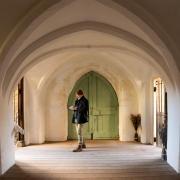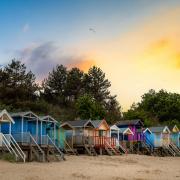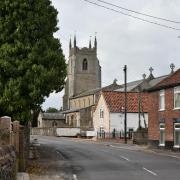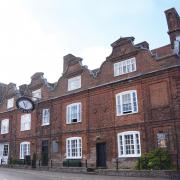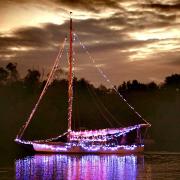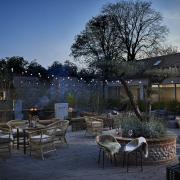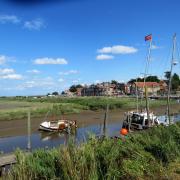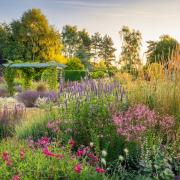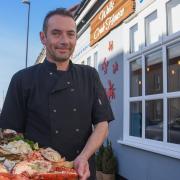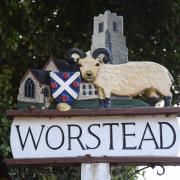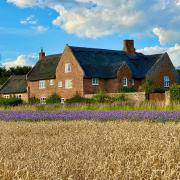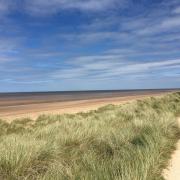A is for archaeology. Starting at the very beginning of our history, there is nothing flat about a landscape where we once built temples of upturned trees and hid hoards of golden treasure from enemies.
B is for the waterlogged, wildlife-drenched, reed-hidden Broads, only home of Britain’s biggest butterfly; and for the wide-open heathland of the Brecks, home to the vanishingly rare but marvellously multi-named Norfolk plover, stone curlew, thick-knee or wailing heath chicken.

C is for a coastline of cliffs and saltmarsh, sand and shingle, bustling resorts and quiet creeks.
D is for dialect. The old language, of bor and bishey barney bee, harnser and on-the huh, proudly championed by the Friends of Norfolk Dialect for all your proper pronunciation or mardle-on-the throshel needs.
E is for east; the east of a glorious sunrise and of the snow-shrouded beast blowing winter wonderlands across the country.
F is for footprints left by a family in Happisburgh 850,000 years ago, sending our knowledge of human history in Europe spinning back to its earliest ever date.
G is for green lanes. Norfolk is cycling country and the leafy silence of this network of tiny roads is a blessing greater than lycra.
H is for history, held for us in Norfolk’s unique set of county museums, and for halls, from rural Holkham and Houghton to city centre St Andrew’s and Blackfriars’.
I is for the Ice Age which brought us pingo ponds.

J is for Jack Valentine. Most children make do with the once-a-year magic of Father Christmas but Norfolk has Jack too every February 14.
K is for Kett. Grounded in then-unfashionable fairness he failed in 1549 but is a hero today.
L is for legends, from the visions of the Virgin which led to Little Walsingham becoming a place of prayer and pilgrimage to the demon dog, Black Shuck, prowling Norfolk nightmares with death-doom eyes.
M is for medieval churches, our unique-in-the-world treasury of flint and faith. Thousand-year-old round towers, glowing wall-paintings, angel roofs, seven-sacrament fonts, cherished memorials in stained glass and stone, each at the heart of a community.
N is for Norwich. A fine city, its skyline still pierced by Norman cathedral and castle, its lanes still lined with independent shops, still straddling its river and balancing the demands of being home, workplace and day-off destination.
O is for ornithology and the shape-shifting murmurations of winter waders tide-forced from Wash mudflats.
P is for pier and Cromer’s one-of-a-kind Pavilion Theatre, all-year round theatre of sunrise and sunset and one-day-only drama of January 1 fireworks.
Q is for Queen. Her beloved Sandringham is not all glittering grandeur. She is also a member of the local WI and keeps her pigeons here.
R is for rivers from the winding Wensum and Waveney through the bucolic boaty Bure and Yare to tiny tributaries, becks and creeks, the Babingley, Hun, Mun and Mermaid.
S is for our sky, famed for its over-arching magnificence.
T is for towns. Try King’s Lynn where the riches which once flowed through its port can still be traced in elegant architecture, and find treasures too from Thetford to Holt and Hunstanton to Gorleston.
U is for underwater. The longest chalk reef in Europe stretches just offshore, sheltering colour-changing cuttlefish, tall anemones and mermaid’s glove sponge.
V is for villages. Some have castles or staithes, harbours, commons or woodland walks. Many have pubs serving daily feasts of local food and drink.
W is for wherries, windmills, water and walks and a winning mix of them all along Wherryman’s Way.
X is for the x-factor which makes Norfolk your happy place.
Y is for Yarmouth. A roller-coaster ride of fish, festivals, offshore energy and onshore tourism.
Z is for ziggurats, those symbols of the University of East Anglia, which is part of the Norwich Research Park and the science securing our future.





